Abstract
Reconstitution of Semliki forest virus infected nude mice with spleen cells from their immunocompetent nu/+ litter mates resulted in an abolition of the otherwise persistent brain virus, production of anti-SFV IgG, and development of normally absent brain pathology. The brain pathological changes, including demyelination, seem to be mediated by T cells, and are maximum 14 days after sensitization of the reconstituting spleen cells. Sensitization of the spleen cells 7 days before transfer to the nude mice results in pathological changes advanced by about 8 days, compared to reconstitution with unsensitized cells. The involvement of T cells in the virus-induced pathology is discussed.
Full text
PDF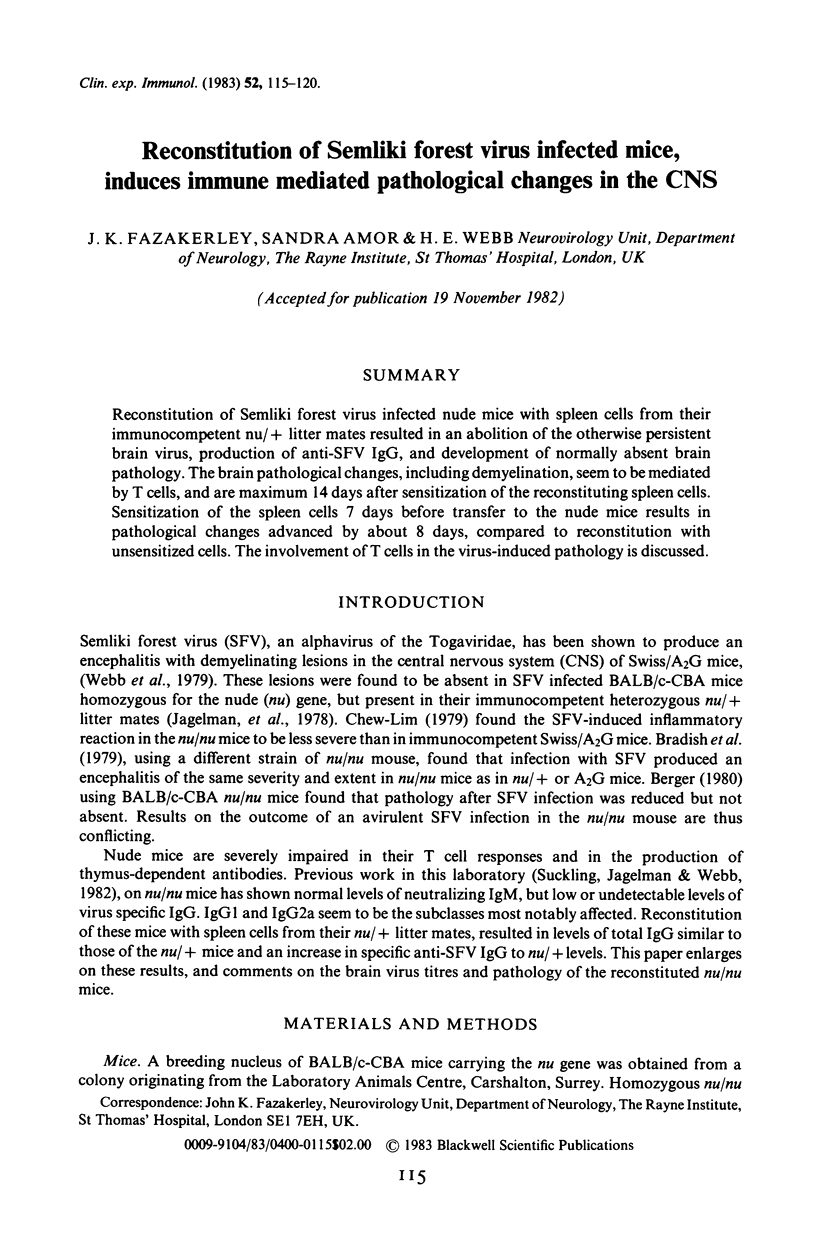
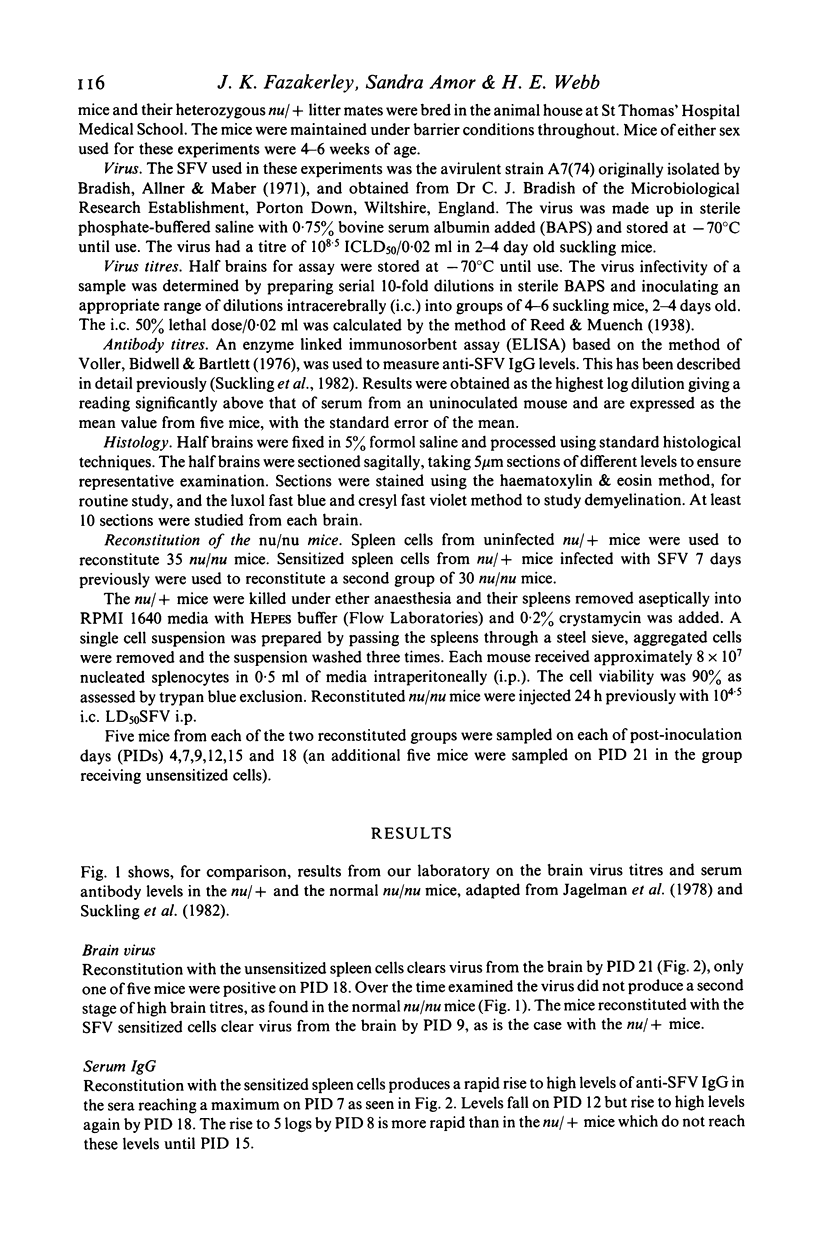
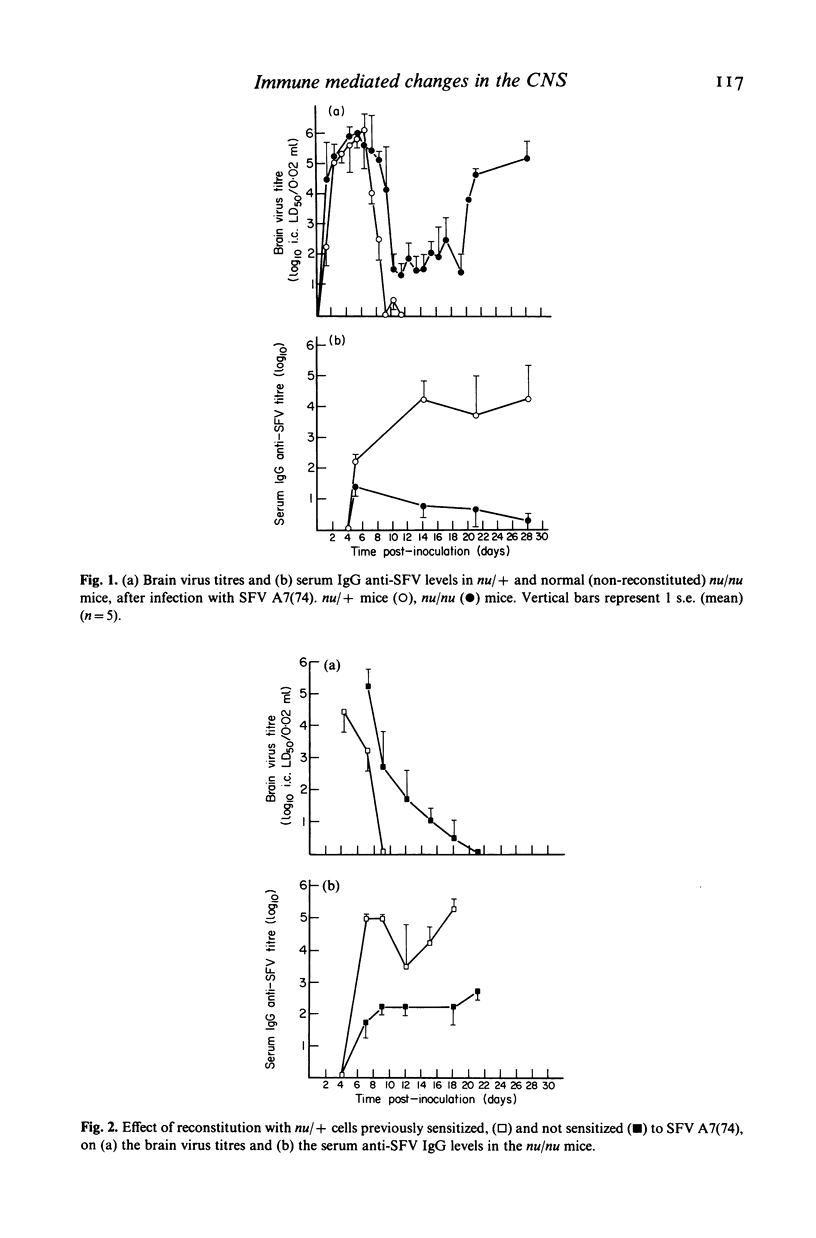
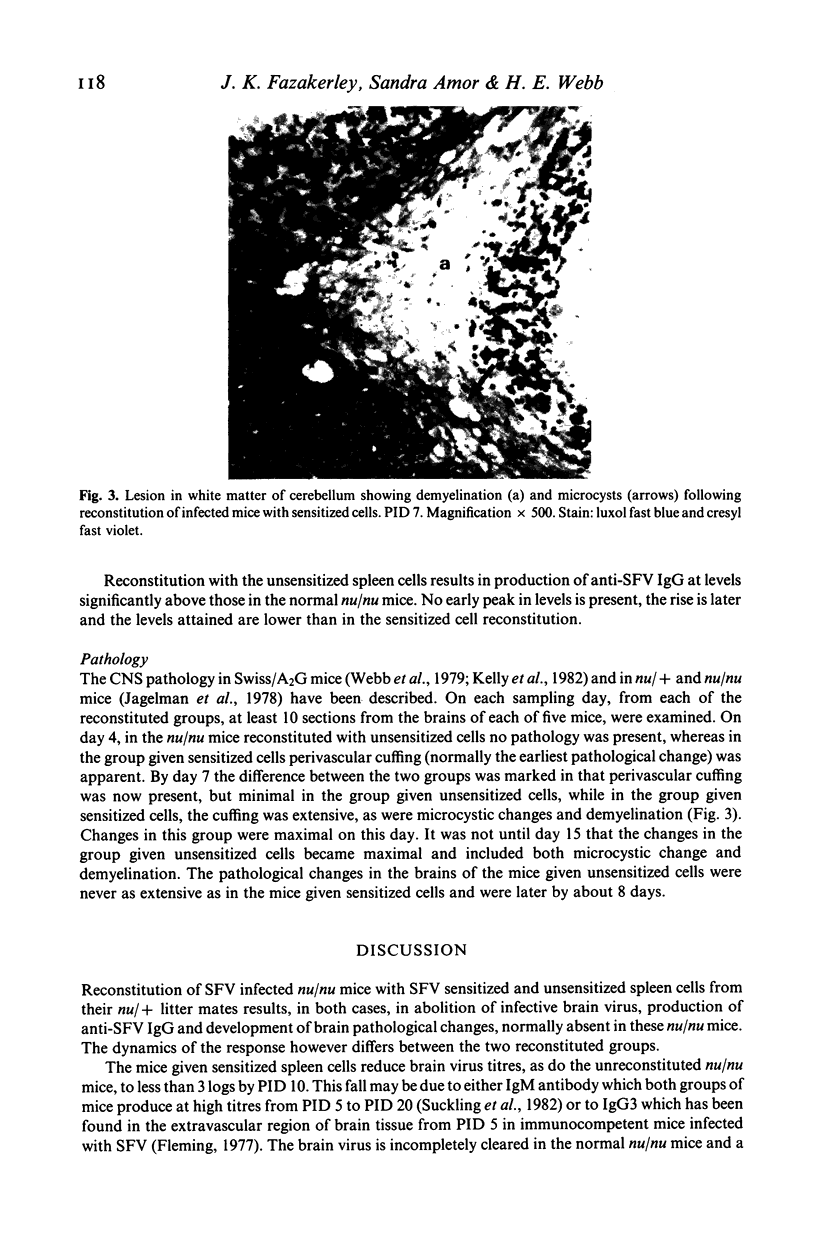
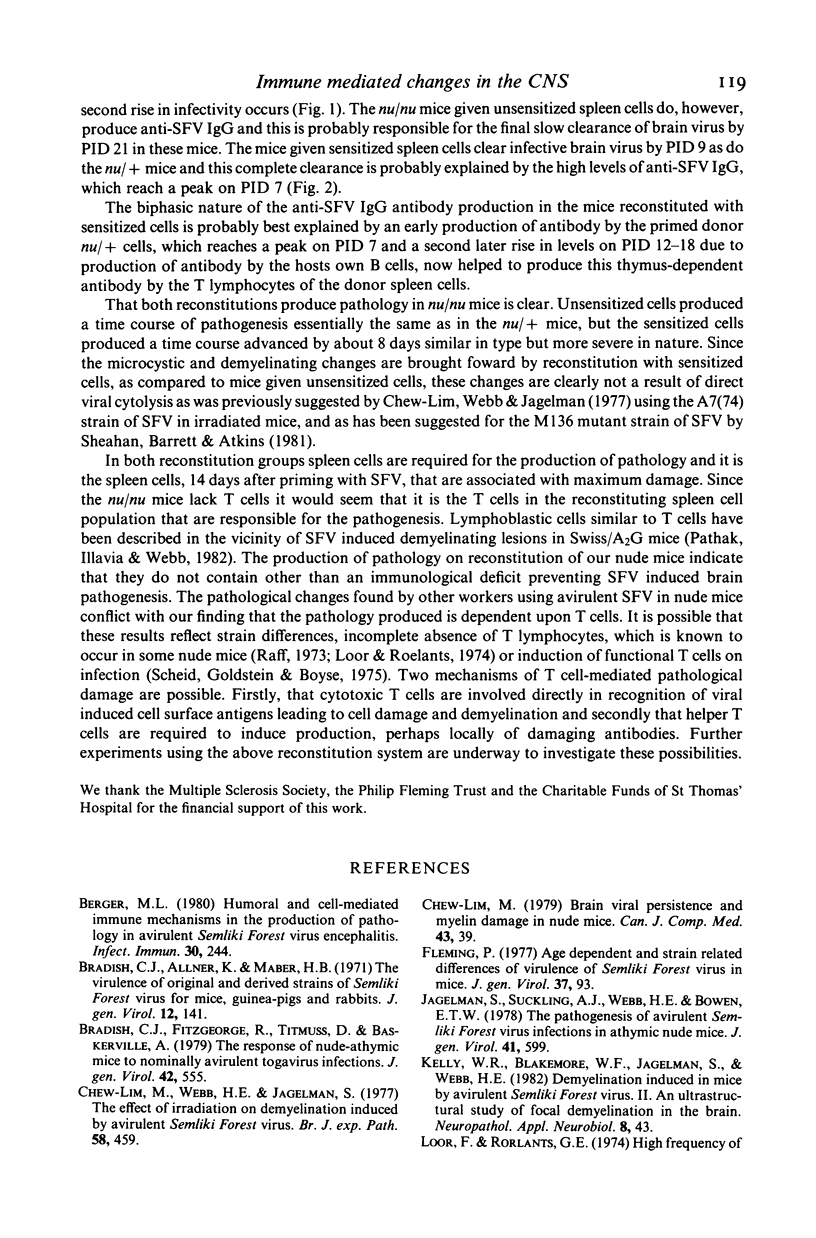
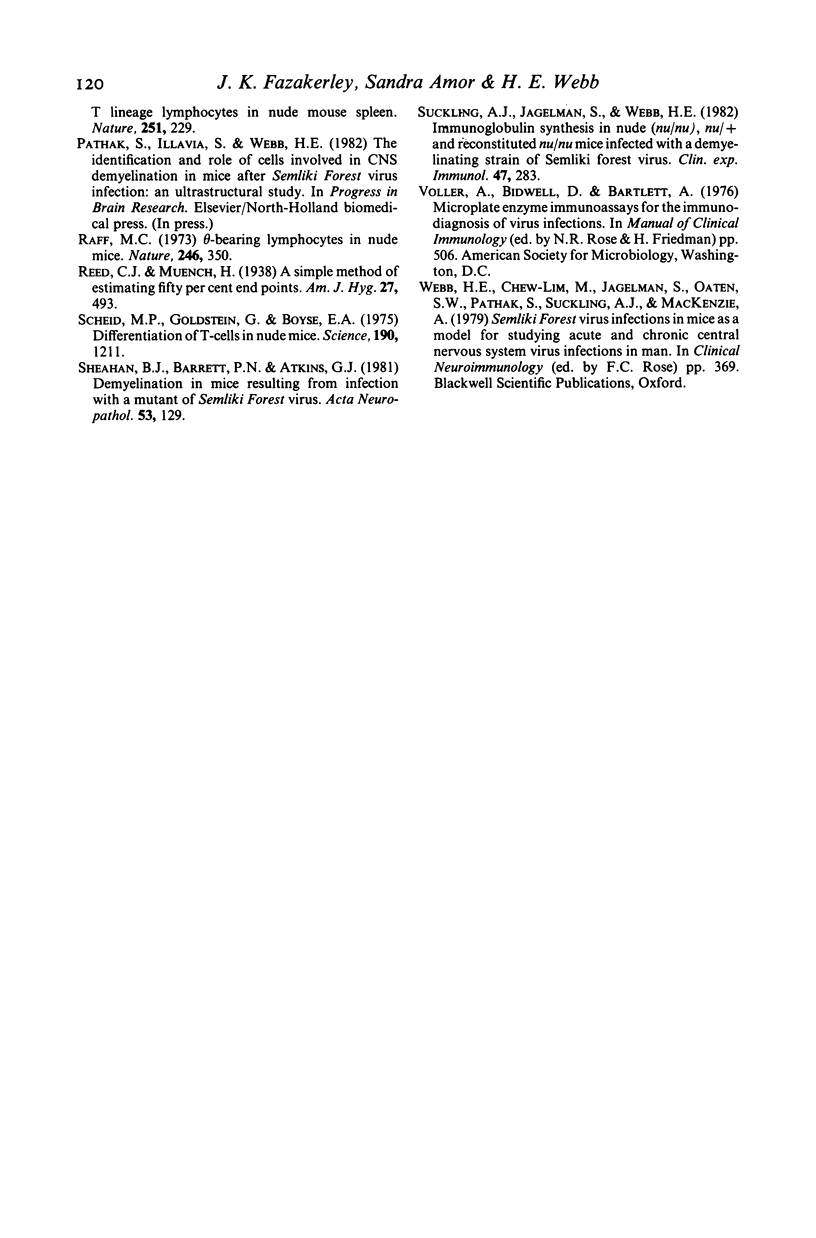
Selected References
These references are in PubMed. This may not be the complete list of references from this article.
- Berger M. L. Humoral and cell-mediated immune mechanisms in the production of pathology in avirulent Semliki Forest virus encephalitis. Infect Immun. 1980 Oct;30(1):244–253. doi: 10.1128/iai.30.1.244-253.1980. [DOI] [PMC free article] [PubMed] [Google Scholar]
- Bradish C. J., Allner K., Maber H. B. The virulence of original and derived strains of Semliki forest virus for mice, guinea-pigs and rabbits. J Gen Virol. 1971 Aug;12(2):141–160. doi: 10.1099/0022-1317-12-2-141. [DOI] [PubMed] [Google Scholar]
- Bradish C. J., Fitzgeorge R., Titmuss D., Baskerville A. The responses of nude-athymic mice to nominally avirulent togavirus infections. J Gen Virol. 1979 Mar;42(3):555–566. doi: 10.1099/0022-1317-42-3-555. [DOI] [PubMed] [Google Scholar]
- Chew-Lim M. Brain viral persistence and myelin damage in nude mice. Can J Comp Med. 1979 Jan;43(1):39–43. [PMC free article] [PubMed] [Google Scholar]
- Chew-Lim M., Webb H. E., Jagelman S. The effect of irradiation on demyelination induced by avirulent Semliki Forest virus. Br J Exp Pathol. 1977 Oct;58(5):459–464. [PMC free article] [PubMed] [Google Scholar]
- Fleming P. Age-dependent and strain-related differences of virulence of Semliki Forest virus in mice. J Gen Virol. 1977 Oct;37(1):93–105. doi: 10.1099/0022-1317-37-1-93. [DOI] [PubMed] [Google Scholar]
- Jagelman S., Suckling A. J., Webb H. E., Bowen F. T. The pathogenesis of avirulent Semliki Forest virus infections in athymic nude mice. J Gen Virol. 1978 Dec;41(3):599–607. doi: 10.1099/0022-1317-41-3-599. [DOI] [PubMed] [Google Scholar]
- Kelly W. R., Blakemore W. F., Jagelman S., Webb H. E. Demyelination induced in mice by avirulent Semliki Forest virus. II. An ultrastructural study of focal demyelination in the brain. Neuropathol Appl Neurobiol. 1982 Jan-Feb;8(1):43–53. doi: 10.1111/j.1365-2990.1982.tb00256.x. [DOI] [PubMed] [Google Scholar]
- Loor F., Roelants G. E. High frequency of T lineage lymphocytes in nude mouse spleen. Nature. 1974 Sep 20;251(5472):229–230. doi: 10.1038/251229a0. [DOI] [PubMed] [Google Scholar]
- Raff M. C. Theta-bearing lymphocytes in nude mice. Nature. 1973 Dec 7;246(5432):350–351. doi: 10.1038/246350a0. [DOI] [PubMed] [Google Scholar]
- Schedi M. P., Goldstein G., Boyce E. A. Differentiation of T cells in nude mice. Science. 1975 Dec 19;190(4220):1211–1213. [PubMed] [Google Scholar]
- Sheahan B. J., Barrett P. N., Atkins G. J. Demyelination in mice resulting from infection with a mutant of Semliki Forest virus. Acta Neuropathol. 1981;53(2):129–136. doi: 10.1007/BF00689993. [DOI] [PMC free article] [PubMed] [Google Scholar]
- Suckling A. J., Jagelman S., Webb H. E. Immunoglobulin synthesis in nude (nu/nu), nu/+ and reconstituted nu/nu mice infected with a demyelinating strain of Semliki Forest virus. Clin Exp Immunol. 1982 Feb;47(2):283–288. [PMC free article] [PubMed] [Google Scholar]


